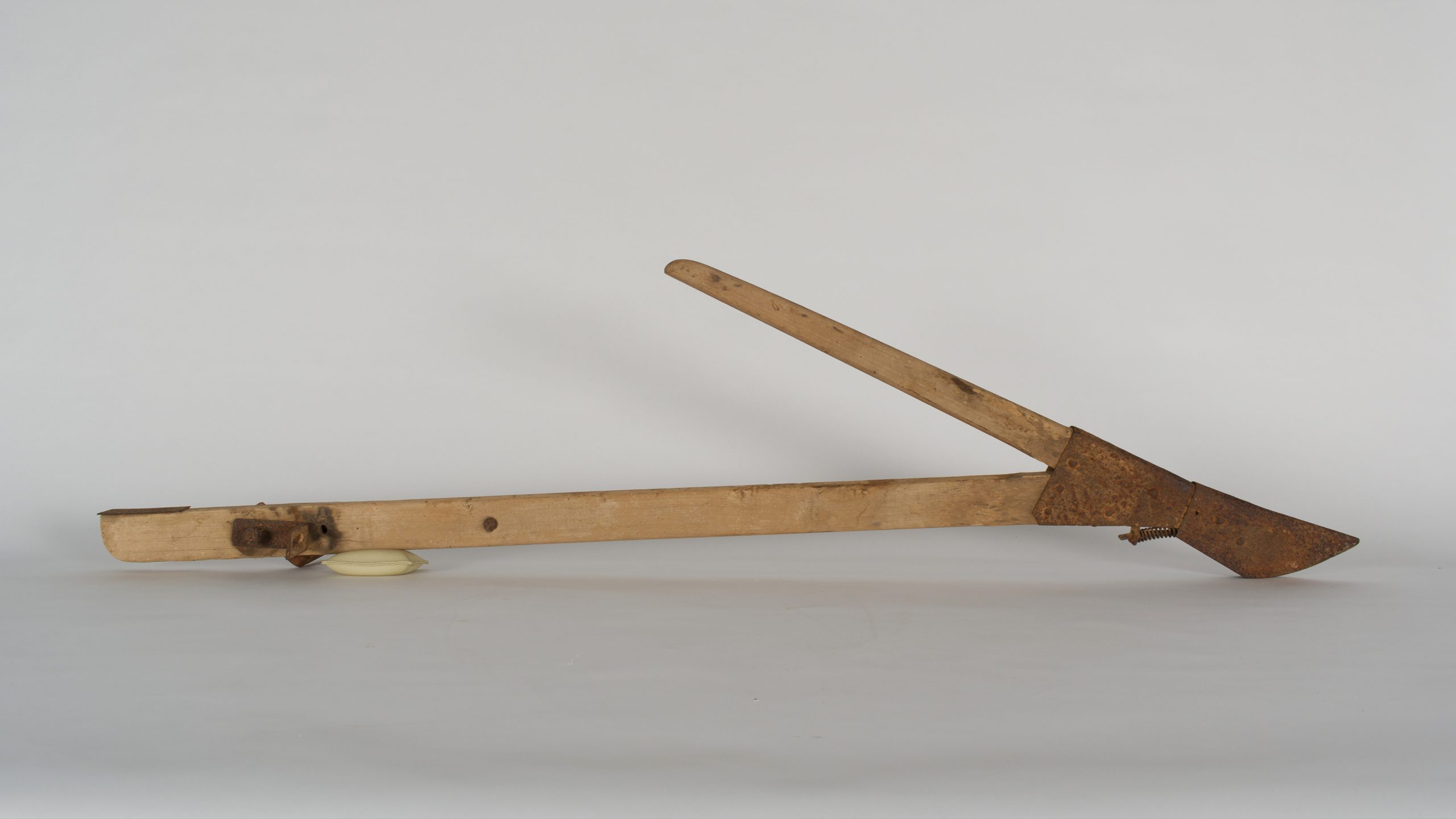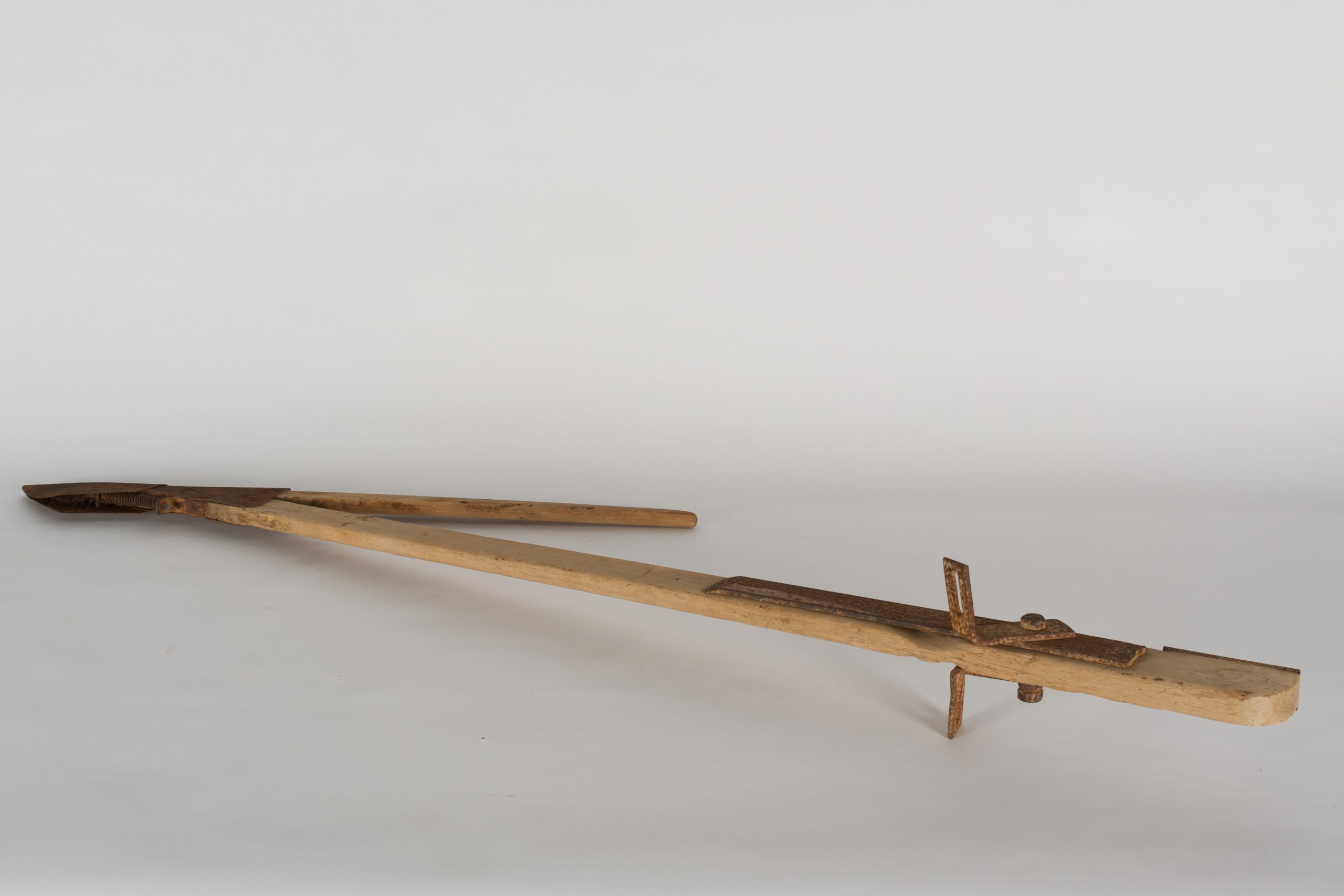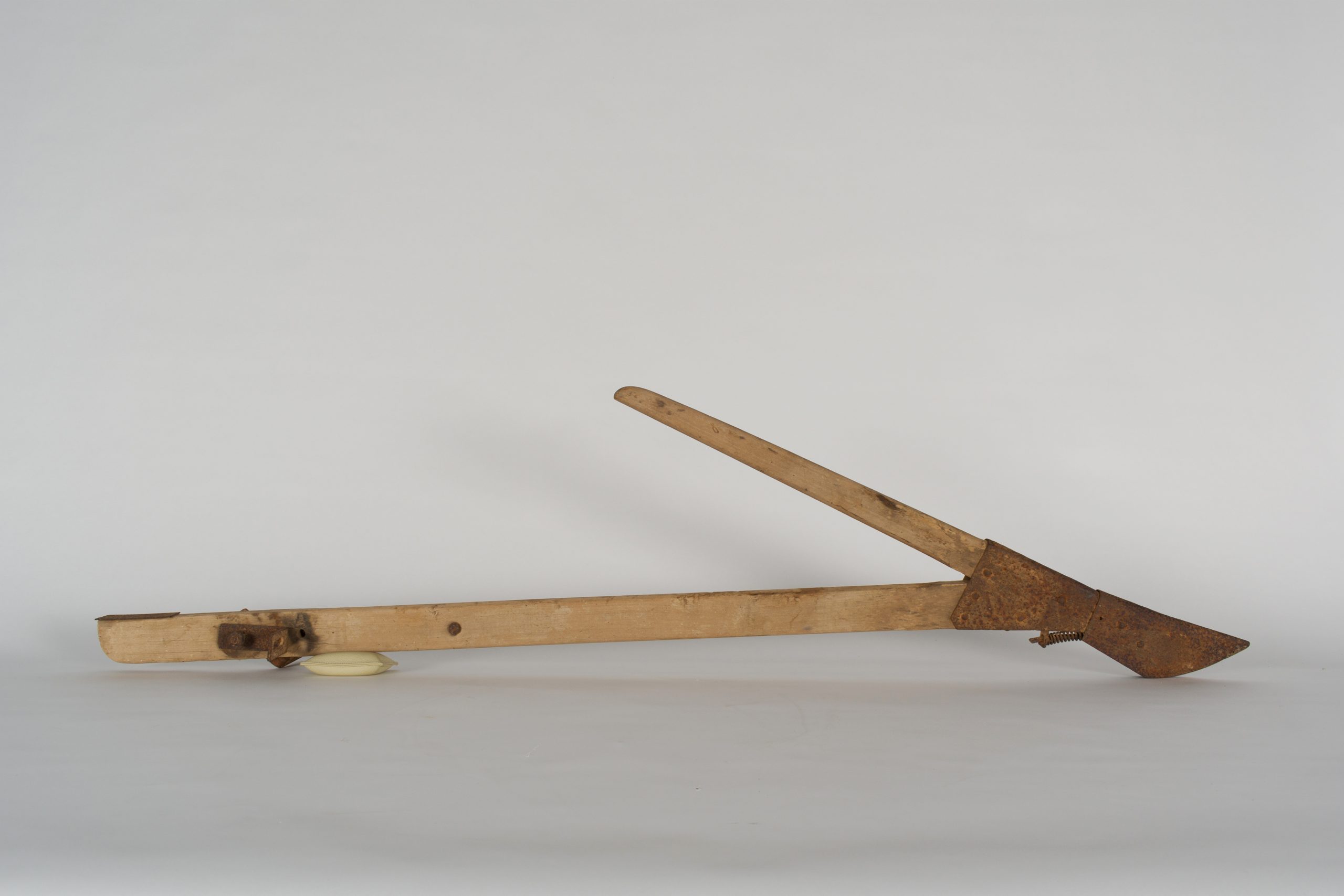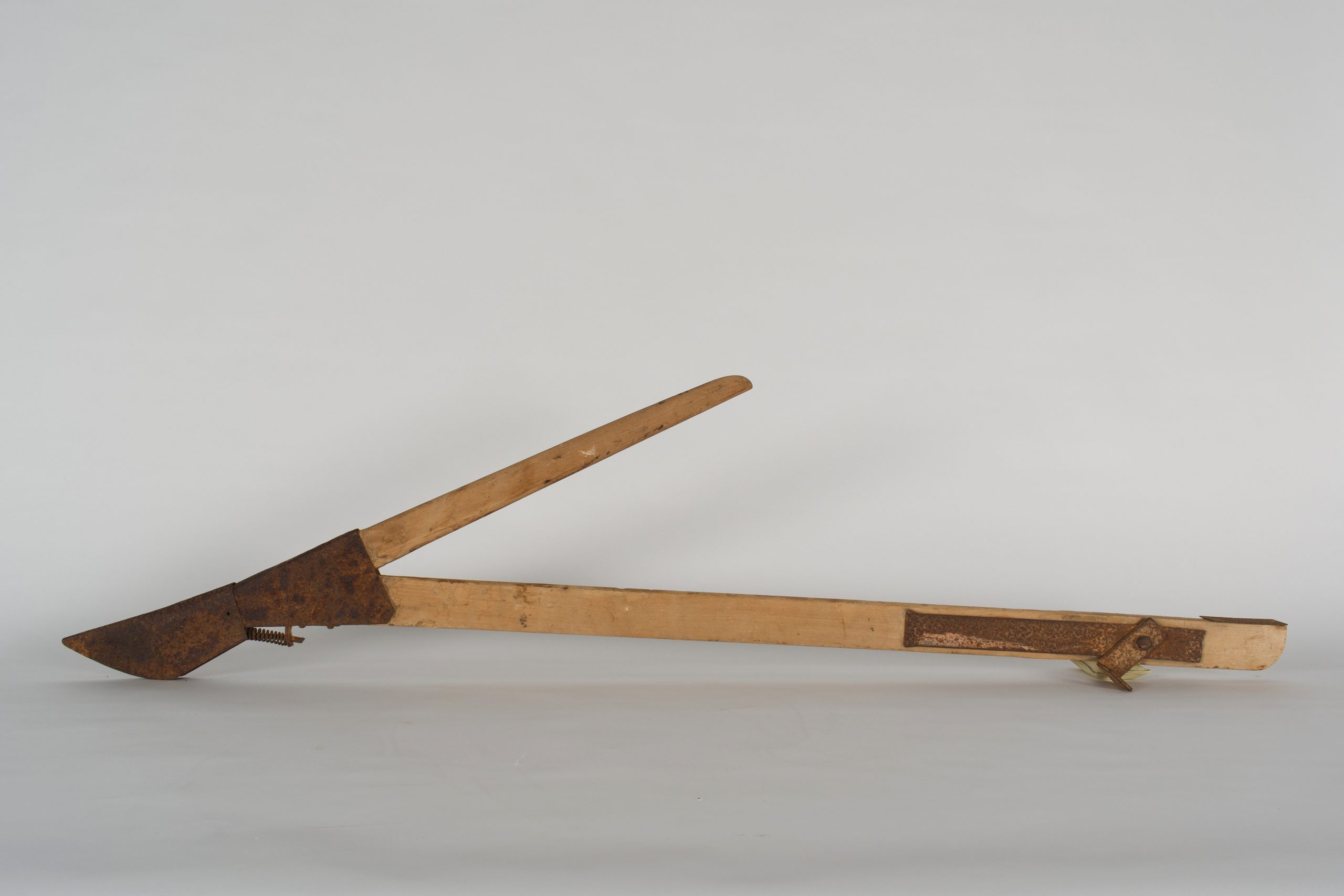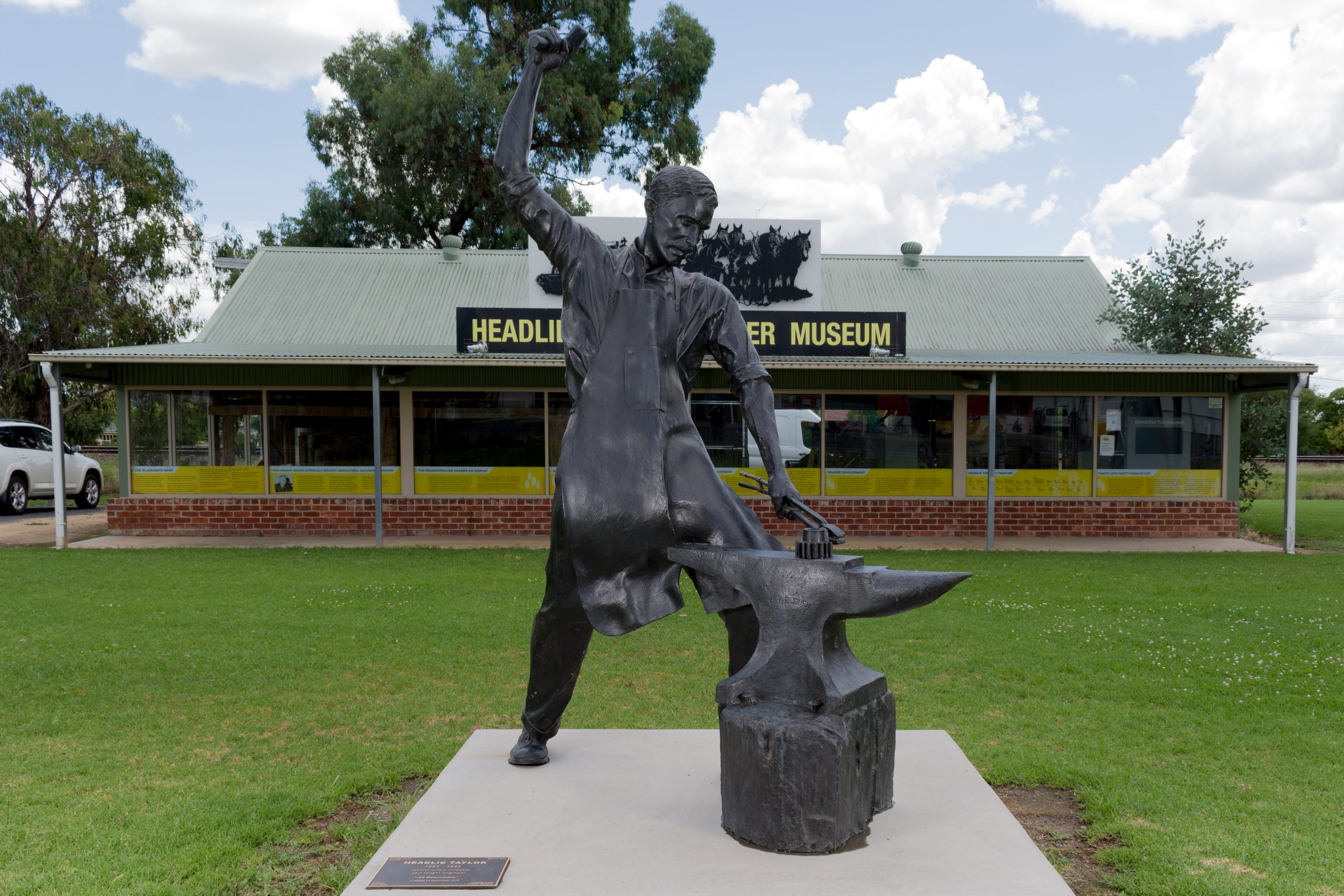Raising Wheat
Headlie Taylor's Crop Lifter Invention
Think of running your fingers through your hair and this is the simple idea behind the Headlie Taylor’s crop lifter. It has been claimed that this invention not only saved the bumper 1920 Australian wheat crop but secured the reputation of the Taylor Header Harvester in the process.
Patented in 1917, early designs were made from wood. Trial and error saw the leading edges capped with metal to protect them when they hit something in the fields. The arms were still prone to breaking so later crop lifters were all metal. By the 1930s, they were also being sold as after-market attachments branded ‘Raisall Crop Lifters’ by the H.V. McKay company Headlie Taylor worked for.
As the Harvester moved through the fields, the arms lifted and untangled the wheat stalks off the ground and into the shorter comb to be harvested. Before this device, only grain stalks standing in the right way were collected by the comb. After adopting the crop lifter, farms reported twenty five percent increases in their harvest.
If Headlie Taylor was alive today, he would recognise versions of his simple design still in use on todays modern combine harvesters all around the world.


